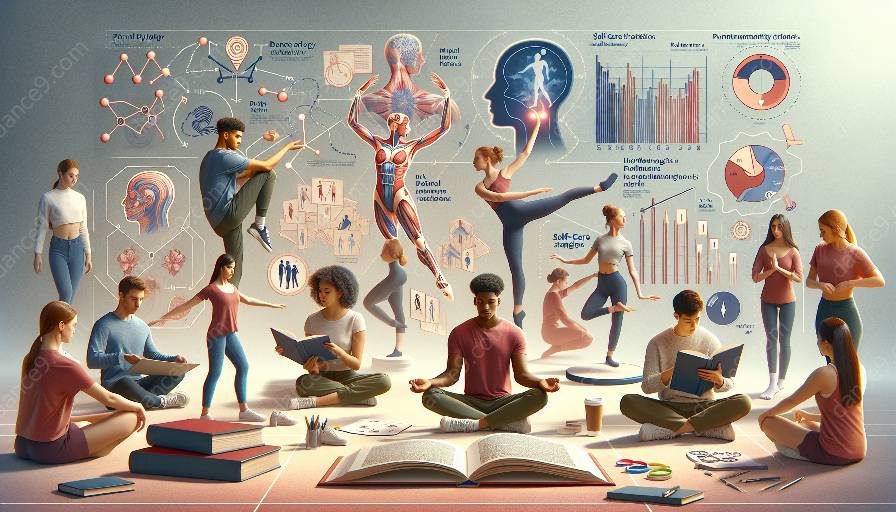Dance is a physically demanding art form that requires a combination of strength, flexibility, and athleticism. However, the rigorous training sessions and performances can take a toll on a dancer's body, leading to injuries and affecting their overall well-being. To maintain physical and mental health in dance, it's crucial for dancers to prioritize self-care and implement strategies to prevent injuries during training sessions.
Understanding Common Dance Injuries
Before delving into preventive strategies, it's essential for dancers to be aware of the common injuries that can occur during training sessions. Some of the most prevalent dance injuries include sprains, strains, tendonitis, stress fractures, and muscle imbalances. Additionally, overuse injuries, particularly in the lower extremities and back, are common due to the repetitive nature of dance movements.
Self-Care Strategies for Injury Prevention
Implementing self-care strategies can significantly reduce the risk of dance-related injuries and contribute to the overall well-being of dancers. Here are some essential techniques and practices to consider:
- Proper Warm-Up: Prior to engaging in rigorous dance routines, it's crucial for dancers to perform a comprehensive warm-up that includes cardiovascular exercises, dynamic stretching, and mobility drills. This helps prepare the body for the physical demands of training and minimizes the risk of muscle strains and tears.
- Correct Technique: Emphasizing proper form and technique during dance movements is fundamental for injury prevention. Dancers should focus on maintaining alignment, engaging core muscles, and executing movements with precision to reduce the strain on vulnerable body parts.
- Rest and Recovery: Adequate rest is crucial for allowing the body to recover from intense training sessions. Dancers should prioritize regular rest days and incorporate techniques such as foam rolling, stretching, and massage to alleviate muscle tension and prevent overuse injuries.
- Cross-Training: Engaging in cross-training activities, such as Pilates, yoga, or strength training, can help improve overall body strength, flexibility, and stability, thereby reducing the risk of overuse injuries in specific muscle groups.
- Nutrition and Hydration: Proper nutrition and hydration play a vital role in supporting the overall health and performance of dancers. Consuming a balanced diet rich in essential nutrients, as well as staying adequately hydrated, aids in muscle recovery and maintains energy levels during training sessions.
- Mental Well-Being: Addressing the mental aspect of dance is equally important for injury prevention. Dancers should prioritize mental health through techniques such as mindfulness, meditation, and stress management to reduce the risk of mental fatigue and performance anxiety.
Stretching and Flexibility
Enhancing flexibility is crucial for dancers to execute movements with fluidity and grace while minimizing the risk of injuries. Incorporating regular stretching routines, particularly focusing on major muscle groups and joints used in dance, can help improve flexibility and prevent muscle strains. Additionally, dynamic stretching and proprioceptive neuromuscular facilitation (PNF) stretching techniques can aid in increasing flexibility and joint range of motion.
Maintaining Physical and Mental Health
In addition to injury prevention strategies, maintaining overall physical and mental health is integral for dancers to thrive in their art form. Emphasizing adequate sleep, stress management, and seeking professional assistance when needed contributes to the holistic well-being of dancers.
By prioritizing self-care and implementing preventive strategies, dancers can reduce the risk of injuries during training sessions and maintain optimal physical and mental health, enabling them to fully express themselves through the beautiful art of dance.


































